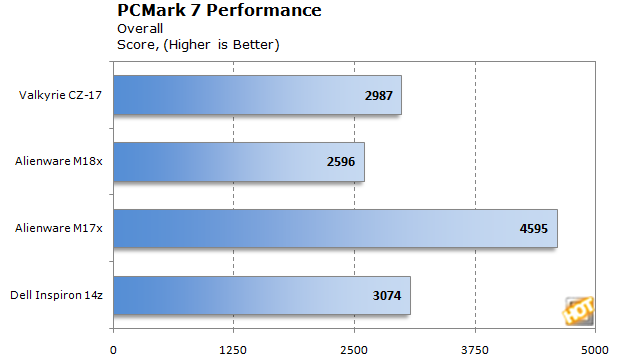iBuyPower Valkyrie CZ-17 Gaming Notebook Review
As we previously mentioned, the CZ-17 makes a few compromises to deliver high performance at a sub-$1500 price point. One of these is the system's conspicuous lack of an SSD. It's a decision we disagree with, particularly given that the Valkyrie has dual drive bays. In a situation like this, where substantial BTO options are available, the solution is simple: Add an SSD. The increasing popularity of SSD cache drives makes it even easier to offer a simple solution that presents like a single drive to the end customer while offering vastly improved performance.
We'll start off with the general performance suites:
|
Futuremark’s PCMark 7 is a well-known benchmark tool that runs the system through ordinary tasks, including word processing and multimedia playback and editing. It's designed to test overall system performance, but is particularly sensitive to the presence or absence of an SSD.

In PCMark 7, the Valkyrie's lack of an SSD is painfully apparent, and it's out-classed by the Inspiron 14z and Alienware M17x. To give you an idea of how much the SSD matters, consider the fact that the Inspiron 14z is powered by a 1.7GHz dual core, compared to the Valkyrie's 2.3GHz non-turbo quad-core.
|
Next, we ran Cinema 4D’s content creation benchmark, Cinebench. Being graphics-oriented, this is an entertaining benchmark to watch. For the CPU test, it generates a complex image.

In CPU-centric tests, the CZ-17's Core i7 CPU pulls nearly to the front of the pack. The Inspiron 14z and its Core i5 is left far behind everything else.






